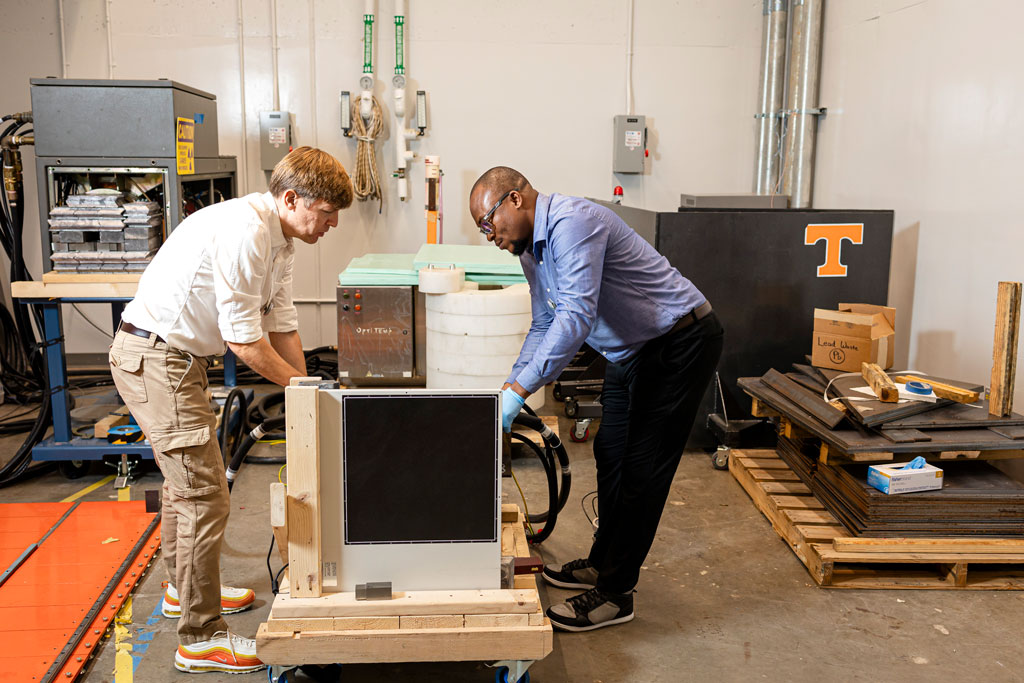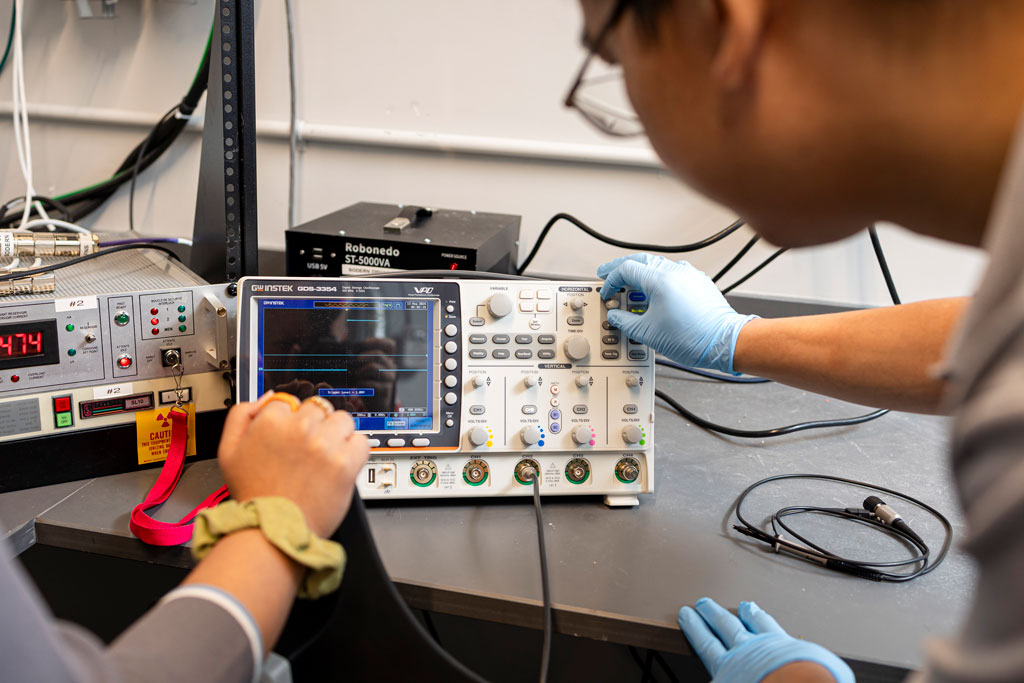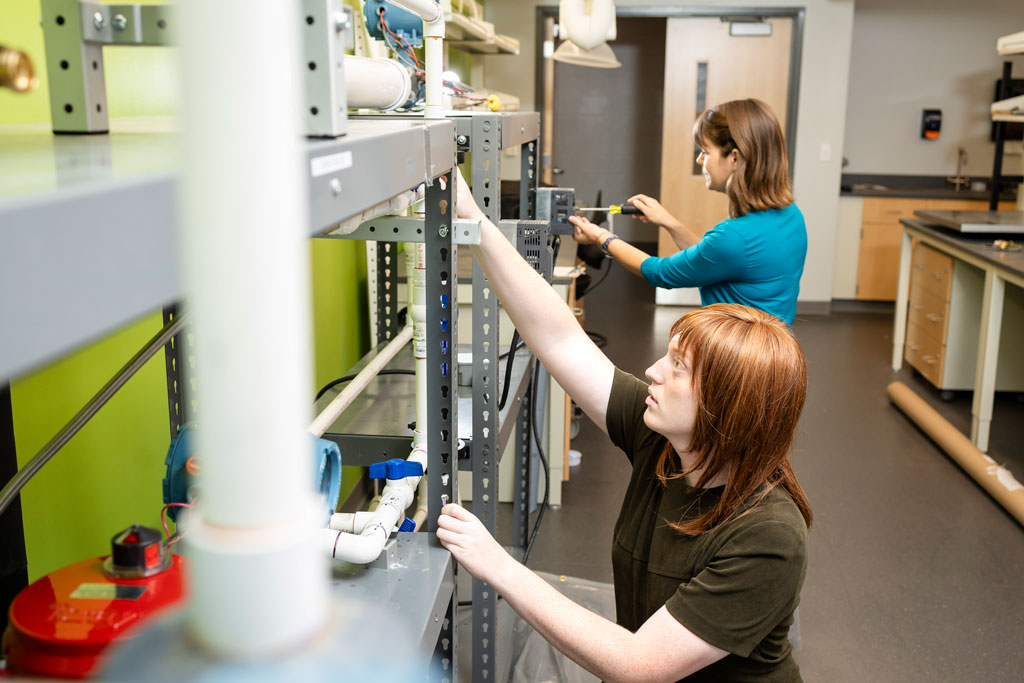Our main approach is the integration of education and experiential student training with multidisciplinary research and innovation across six TecH areas, enhanced by year-round national laboratory engagement.
Main TecH Areas
Earth, Environmental, Atmospheric, and Space Science (EEAS)
Nuclear activities—including material development and explosion—create various signatures in the Earth systems such as changes in environmental chemistry and isotopic compositions, atmospheric aerosols, and biological systems as well as seismo-acoustic and radiation signals from detonation. Our team of the nation’s top scientists will develop a comprehensive framework—based on state-of-the-art Earth science and technologies— for detecting and locating nuclear material production as well as nuclear detonation in foreign countries through capturing and interpreting these signatures. We will advance analytical methods and technologies to quantify these signatures using environmental sampling, sensors, and sensor networks. These analytical capabilities will be coupled with the latest machine learning methods and fate and transport simulations for source detection, localization, and characterization.
- Lead: Haruko Wainwright (MIT)
- Deputy Lead: Terry Hazen (UTK)


Radiochemistry, nuclear chemistry, and nuclear chemical engineering (RNC/NCE)
The research area of radiochemistry, nuclear chemistry, and nuclear chemical engineering develops a fundamental understanding of physical and chemical properties of actinides and fission products in environmental and nuclear systems, including those associated with alternative and emerging fuel cycles. This understanding is critical to enable our capabilities to identify trace actinides near undeclared nuclear facilities, monitor processes at declared nuclear facilities, and detect nuclear weapon tests. Integrated research and education in this critical area, led by many of the nation’s top radio and nuclear chemists and engineers, will also yield the next generation of chemistry experts with appropriate specialization to address emerging nuclear nonproliferation challenges.
- Lead: Deborah Penchoff (UCF)
- Deputy Lead: Howard Hall (UTK)


Advanced nuclear fuel and reactor systems engineering (ANF/RSE)
Our research in this area focuses on the future of the fission and fusion reactor systems that will be deployed to provide an enormous increase in power in the coming decades as we cooperate internationally to achieve carbon neutrality. Several Gen-IV advanced reactor concepts that are expected to be widely deployed in coming years adopt fuel designs and operation modes that challenge or outright break the long-standing item-based model of spent nuclear fuel safeguards. Additionally, some of the fundamental characteristics of these emerging fuels are not yet understood. Meanwhile, these reactor concepts also offer new opportunities to implement the safeguards-by-design, which includes predicting and measuring compositions during reactor operation, as well as detecting and diagnosing material diversion scenarios. To this end, our team of the nation’s top nuclear fuel and reactor engineers proposes to characterize emerging fuels and develop advanced diagnostic techniques based on artificial intelligence, machine learning, innovative measurement techniques, and digital twins coupled with advanced modeling and simulation capability to measure, monitor, and predict the elemental and isotopic composition of irradiated fuel and detect and localize material diversion scenarios on- and off-line. The advances in measurement and ModSim technology and advanced data analytics to be achieved in this research area will introduce a paradigm shift in the material control and accounting (MC&A) approach for advanced reactors. Research in this area also seeks to understand the production and material attractiveness of special nuclear material and tritium in inertial confinement and magnetic confinement fusion reactors.
- Lead: Jason Hou (NCSU)
- Deputy Lead: Jinsuo Zhang (VT)


Cross-Cutting TecH Areas
Detection, characterization, and response (DCR) methodologies and tools
The DCR methodologies and tools research area cuts across the three main TecH areas (EEAS, RNC/NC, ANF/RSE). New methodologies and tools provide:
- enabling capabilities for detection and monitoring of foreign production of special nuclear materials and weaponization activities;
- for remote nuclear detonation detection, localization, and characterization;
- for near field detection, localization, characterization of nuclear and energetic materials and items that may be a threat or that have gone out of regulatory control;
- and for assay, monitoring, and accountancy of nuclear materials associated with alternative and emerging fuel cycles and advanced reactors.
Sensing from the near field, to the fenceline, and even to outer space can be improved by: observing the right signals at the right place and time; understanding the fate, transport and propagation of the signals; and improving the sensitivity of detection through advanced signal processing and algorithms, improved understanding of background, and advances in modeling and simulation.
- Lead: Haori Yang (Oregon State)
- Deputy Lead: Eric Lukosi (UTK)
Data science for nuclear nonproliferation (DSNN)
The research area on data science for nuclear nonproliferation technologies cuts across the three main TecH areas (EEAS, RNC/NC, ANF/RSE). The unprecedented amount of data available to the nonproliferation community through persistent observation, large measurement campaigns, simulation tools and digital twins, offers the opportunity to leverage data science techniques including artificial intelligence and machine learning to extract complex and often hidden insights from data, as well as to develop new algorithms that advance the state-of-the-art. Data science technologies are also key to addressing emerging challenges in nuclear nonproliferation posed by the rapidly evolving and complex threat landscape of the modern era. These technologies are further enabled by advances in exascale computing, supercomputing architectures, and edge computing, which will be leveraged by our high-ranking team of the nation’s computing and nuclear experts to broadly train and educate the future nuclear security workforce.
- Lead: James Ghawaly (LSU)
- Deputy Lead: Jamie Coble (UTK)
Education and training
The NNSA recognizes the critical need to cultivate a highly skilled and diverse workforce capable of supporting essential nonproliferation missions in early proliferation detection and nuclear security. To address this need and prepare future generations to contribute effectively to national laboratories, our consortium focuses on tailored education and training initiatives. The TecH consortium aims to maximize education and training engagement with the national laboratories by including:
- a mixture of new and existing summer courses,
- internships for undergraduate and graduate students,
- and early career participation in visiting programs at the labs.
Additionally, direct involvement of national laboratories in academic education, such as collaboration in senior design projects and Master’s and PhD committees, is crucial. This comprehensive approach seeks to enhance the diversity of talent and to empower students to pursue professional research careers aligned with the NNSA’s mission.
- Lead: Sandra Bogetic (UTK)
- Deputy Lead: Lawrence Heilbronn (UTK)
